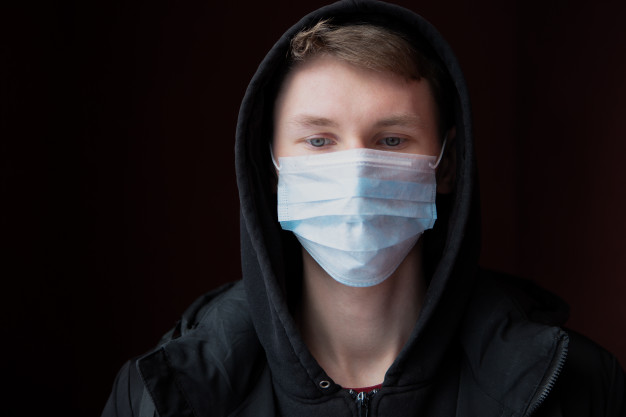Face masks provide a physical barrier between the wearer and other people. They can prevent the wearer’s respiratory discharges from reaching other people and so reduce the spread of the disease to uninfected people. They also can protect the wearer themselves to some degree from large respiratory droplets that other people may emit.
Face masks and other coverings have been revealed to reduce the spread of coronavirus and specialists say any type of cloth face mask is more reliable than a bare face. People who have COVID-19 may not have any signs, so by covering the face by masks we can reduce population transmission.
Face masks should be used in conjunction with additional measures, such as social distancing, hand hygiene, staying home when sick, and testing. At the very least, face masks are encouraged on public transportation, situations where you can’t socially distance, and for people who are sick, or who are going for testing.
How Many Layers Should a Cloth Face Mask Have?
Multiple layer masks have been shown to contribute more comprehensive protection than a single layer. The WHO suggests a multi-layer mask with a pocket for a detachable filter.
You can also make a cloth face mask with 2 layers of material that have a pocket for a disposable filter. That way you can throw the filter and rinse the mask before replacing it with a new filter.
What type of material can you use for a cloth face mask?
Use New Fabric and Wash It First to Assure It Doesn’t Flinch After You’ve Made the Mask.
●Cotton is great for the interior layer.
●Pure polyester is not recommended as it is hard to breathe through.
●A cotton/polyester mix is a sensible choice for the intermediate layer.
●Some mask designs use a water-resistant exterior layer, such as polyester.
What do you need to make a cloth face mask? To make your face mask you will need:
●Fabric for the layers. You will require at least 2 pieces of new fabric 25 cm x 25 cm. Using new material will guarantee the materials are intact and there are no holes or thin patches.
●Earloops. These need to be approximately 20 cm long each. You can use shoelaces, elastic, string, elastic hair bands or something similar.
●Optional removable filter. The filtration effectiveness of cloth masks can be enhanced by having an inbuilt filter. Even one layer of tissue paper can improve the filtration of the mask by nearly 9 per cent. Remove your filter and dispose of it before washing the mask.
●Optional nose piece. You can sew in a bendable nose piece, which will help the mask fit better over the bridge of your nose. It could also potentially help if you have problems with your glasses fogging up.
How to ensure a good fit A face mask should cover your mouth and nose. Your chin should be covered so you get a good seal around your mouth. The mask should fit snugly on the bridge of the nose. It should also fit snugly against the sides of the face. You should be able to breathe without restriction or feeling that you are being choked.
How to Stop Your Glasses Fogging up
You may find your eyeglasses fogging up when you wear a face mask. Ensuring a secure fit of your mask will help limit fogging. Having an adjustable nosepiece may assist with this by preventing your breath steaming up your glasses. Or you can use a little piece of medical tape to fix the mask to the bridge of your nose. You can also try wiping the lenses of your glasses with the recommended spray, or use a small drop of washing-up liquid to rub on the lenses, then rinse off.
How Often Should Wash Face Mask?
Cloth face masks should be washed after every day of use. If you use a mask only for your morning and evening commutes, but not while you are at work, you will require separate cloth masks for each journey. Take the mask for your homeward journey to work with you in a neat plastic bag. Once you have shed a mask it should be placed in a bag until it is washed. Do not touch your eyes, nose or mouth, or the mask, when removing the mask, and make sure you perform hand hygiene after removal. Take note of the status of your cloth face mask. Over time the material may convert thinner or compromised and the mask should be replaced with a new one.
Click Here : https://healthnox.com/
